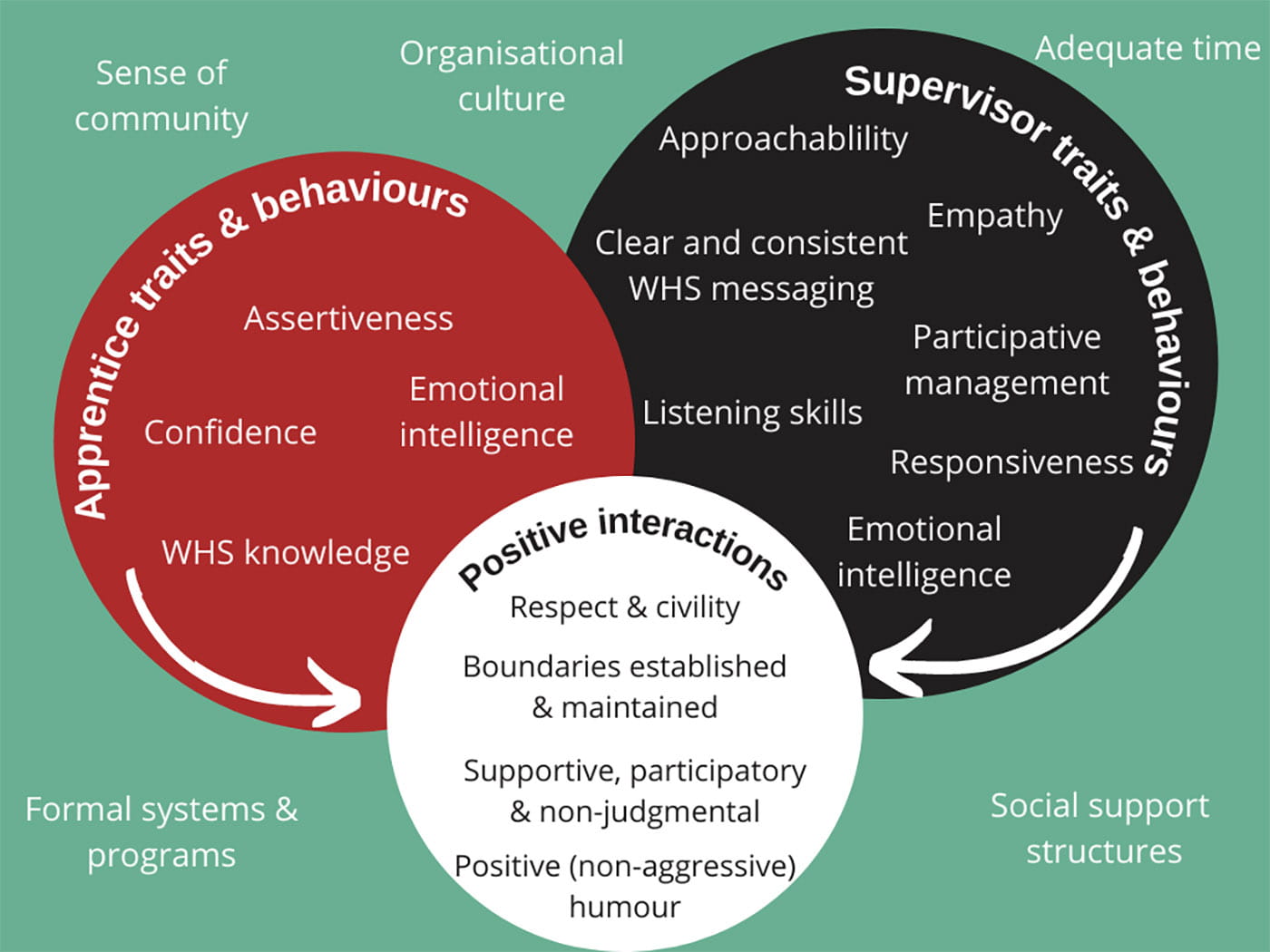Support for young construction workers' health, safety and wellbeing comes through good communication
New research has found that the communication between young construction workers and their supervisors is critical to promoting good health, safety and wellbeing both on site and in life.

The research is run by RMIT University in collaboration with Masters Builder Association (NSW) and the Australian National University, and funded by Insurance and Care NSW (icare). It will be used to design recommended evidence-based interventions to help improve the quality of communication.
"Young workers in construction under the age of 25 are at-risk workers who unfortunately have experienced a disproportionately higher incidence of work-related safety incidents and injuries compared to older workers," says Chris Harnett, icare's General Manager of Prevention.
"RMIT University has found that although there are job-related factors like demands, deadlines, damaged equipment, inadequate training and having limited ability to control the way work is done, the support of supervisors is critical to young workers' health, safety and wellbeing."
What's next?
Following a qualitative analysis of interviews conducted, Professor Helen Lingard from RMIT University, says the next stage of their program will be to improve the quality of communication interactions between supervisors and apprentices.
"We know that supervisors' communication with young workers is critically important to them feeling and being safe in the workplace," says Professor Helen Lingard.
"Yet, international research and our qualitative analysis suggests that young workers are sometimes hesitant to ask questions or raise concerns about workplace health and safety because they perceive that they may not be listened to or, worse, that they will be subjected to ridicule.
"We have undertaken 41 interviews to determine the characteristics of positive, open and supportive interactions between supervisors and apprentices in the Australian context.
"Role modelling and mentoring facilitate constructive workplace learning, including in relation to safety. This will form part of our program to improve the quality of communication between supervisors and apprentices."

Figure 1: Model of factors facilitating effective communication and social support
"We are collaborating with the Master Builders Association (NSW) Group Training Scheme and the program will be trialled with their members."
The goals
The three-year project utilises a mixed methods approach with three primary goals:
- To understand the way that supervisors and workers talk about life, health, and safety
- To identify the characteristics of supportive interaction and supervision of young workers
- To identify organisational or context-related drivers of conversation failure (for example time pressure, lack of support etc).
Injury Prevention in Construction (IPIC) investment
This project, from RMIT University's Construction Work Health and Safety Research Group, is part of the IPIC investment, managed by the icare Prevention team.
RMIT University is one of three partners in the $3.16 million IPIC investment, which also includes the Housing Industry Association (HIA) and TAFE NSW.
The HIA has designed a digital safety behavioural change program delivered via a social media campaign to help reduce the rates of injury among young workers and apprentices who work on construction sites in NSW.
TAFE NSW has developed an immersive online and virtual reality (VR) training program for students undergoing apprenticeship training on how to work safely at heights. Their training program complements and enhances the existing classroom learning by enabling students to virtually experience potential hazards and risks associated with working from heights and offer them an opportunity to apply their knowledge in a series of high-risk scenarios.
October is Safe Work Month. Find out more on the SafeWork NSW website.

